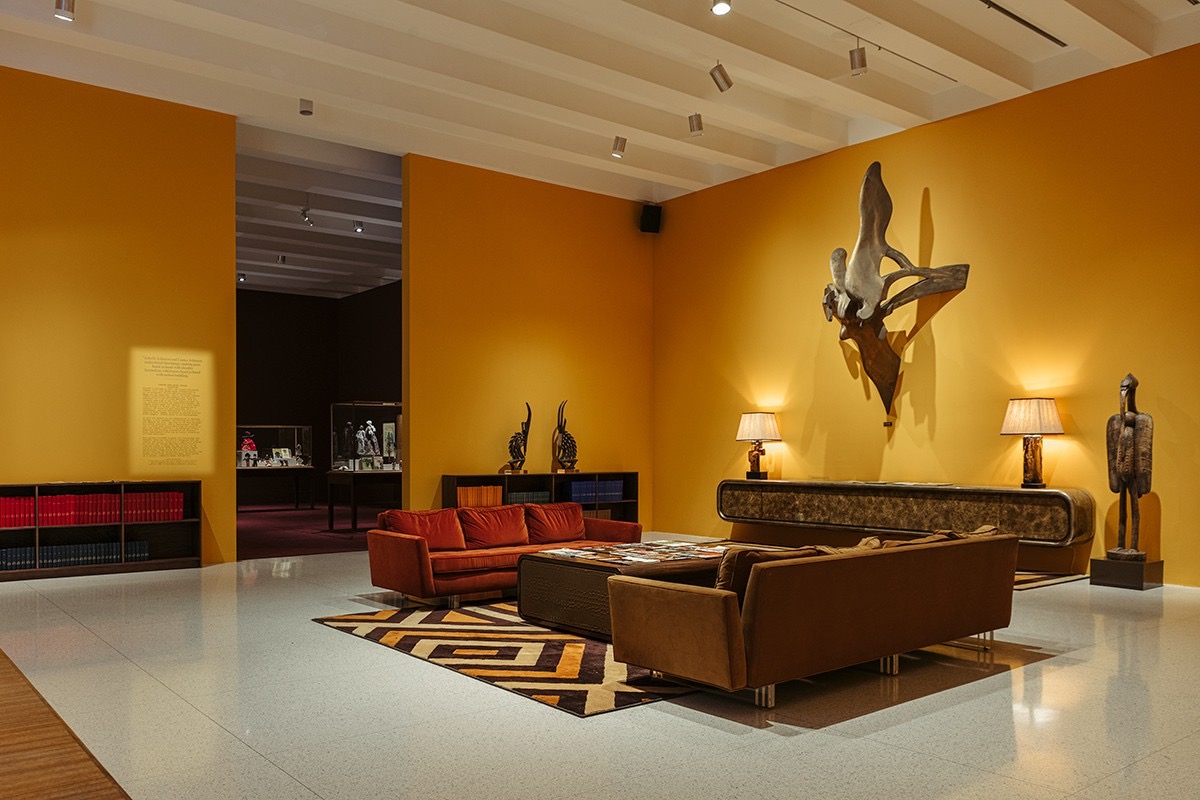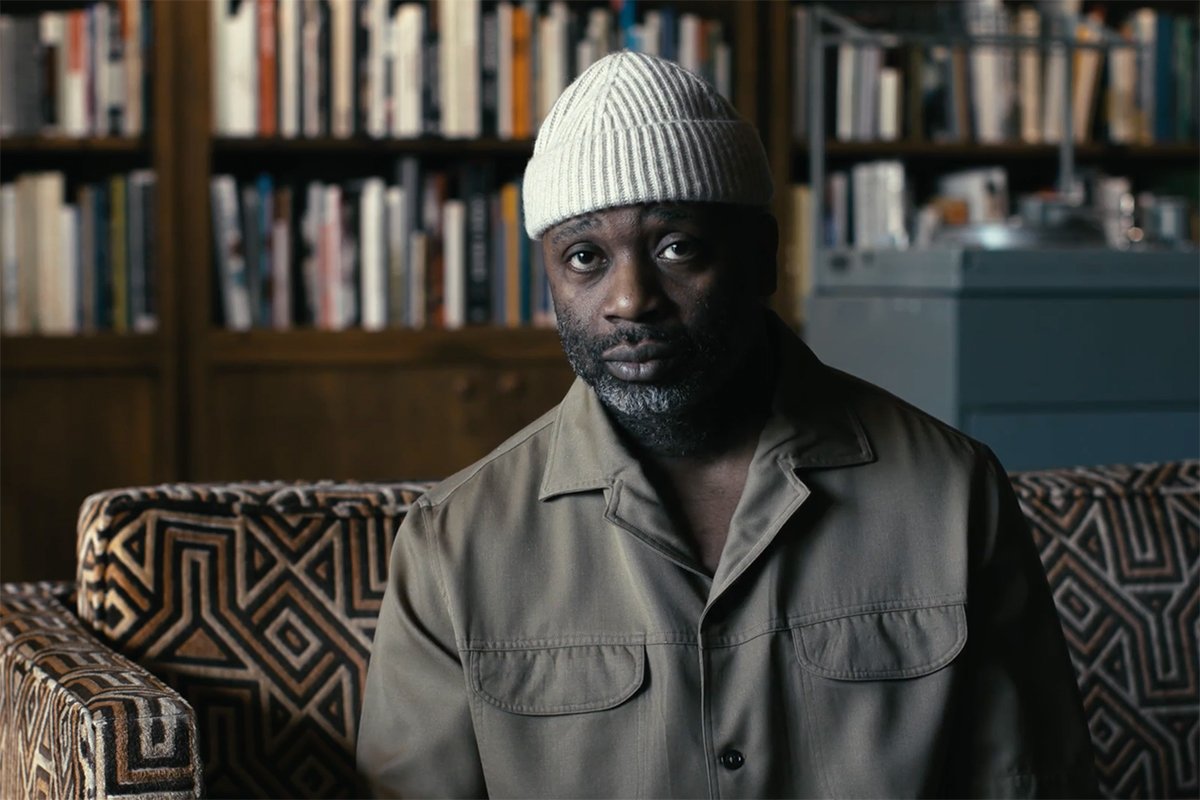
Theaster Gates: From Chicago Roots to Dorchester Projects – The Birth of Socially Engaged Art
ArtWizard 09.04.2025
Cover photo of the article Chris Strong. Courtesy of Gagosian
"I’m more interested in activating the potential that already exists within a community than just creating something new out of nothing." - Theaster Gates
Theaster Gates' journey to the forefront of contemporary art is marked by a deep commitment to his native Chicago community, an unwavering interest in the transformation of forgotten spaces, and a belief in the power of culture to preserve memory and stimulate social change. Born in 1973 on the West Side of Chicago, Gates grew up in a family with strong ties to African American culture and traditions. His father was a construction worker, and his mother a teacher, and these early influences shaped his multidisciplinary approach to art, blending elements of craft, social practice, and conceptual depth.
Gates' education is as eclectic as his practice. He received a Bachelor of Science degree in urban planning and ceramics from Iowa State University, after which, in the late 1990s, he studied ceramics in Tokoname, Japan. This period was pivotal for his development as an artist, helping him to understand that "ugly things, dirty things, or things that are misshapen are just waiting for the right hands." Upon his return, he earned Master's degrees in fine arts and religious studies from the University of Cape Town and the University of Chicago. This interdisciplinary background provided him with a unique perspective on crossing the boundaries between art, architecture, social sciences, and spirituality. His early interest in ceramics laid the foundation for a lifelong relationship with the material and for an understanding of the process of transformation, which would later manifest in his large-scale urban regeneration projects.
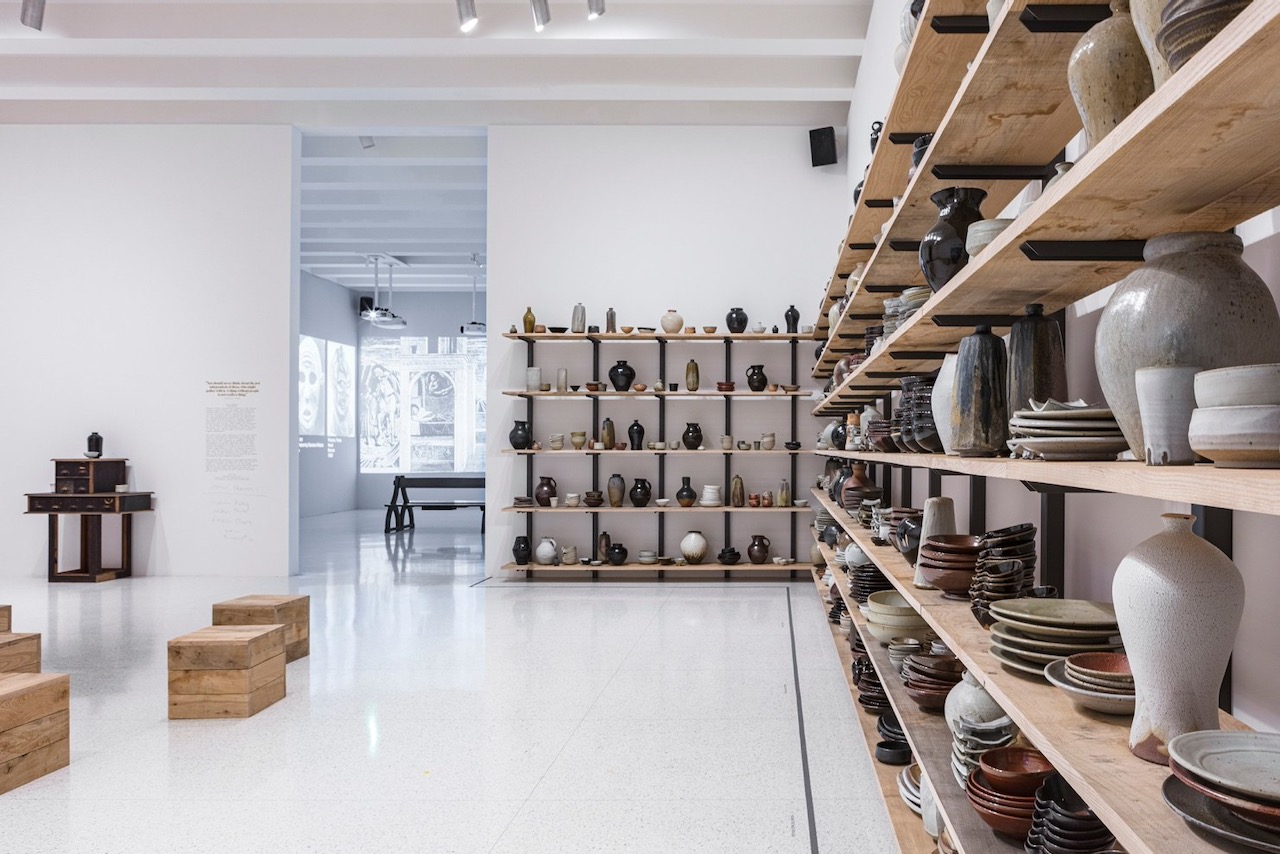
Installation view, Theaster Gates:
Assembly Hall, Walker Art Center, Minneapolis, September 5, 2019-January 12, 2020
Artwork © Theaster Gates. Photo: Bobby Rogers, courtesy Walker Art Center, Minneapolis
His time in South Africa, where he studied religious studies, played a significant role in his formation as an artist. He became acquainted with rich African religious traditions and their material expression, as well as local crafts and the use of natural materials. His observations of the social and spatial dynamics in post-apartheid South Africa likely sharpened his awareness of the connection between culture, memory, and social change – themes that would later become central to his work.
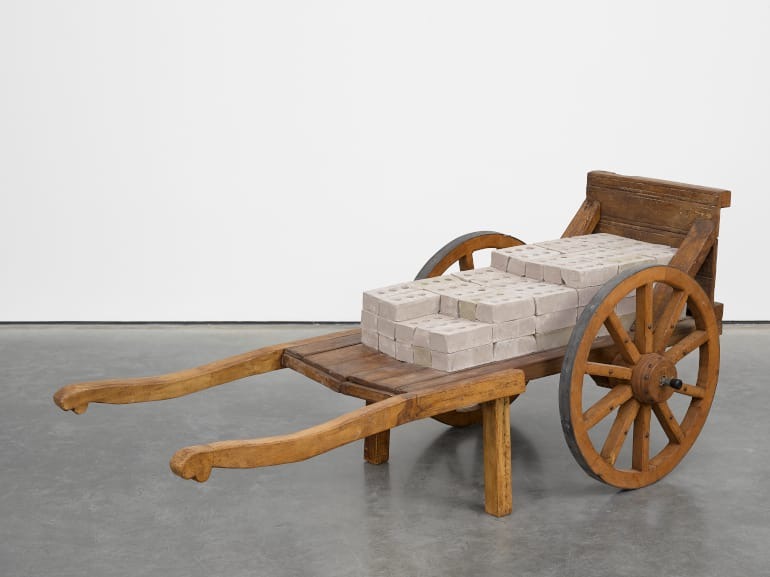
Theaster Gates, Rickshaw for Black Bricks, 2013
© Theaster Gates. Images: Marc Tatti
Before focusing on large-scale socially engaged projects, Gates created ceramic sculptures and installations, often exploring the relationship between form, function, and the transformation of materials. His training and residencies in Japan and South Africa inspired him with the rich traditions of art and craft from these cultures, which is evident in his experiments with textures and natural materials. Even in these early works, his interest in reinterpreting familiar objects and spaces, seeking new meanings and potentials within them, is apparent.
A pivotal moment in the development of his practice was the creation of Dorchester Projects in the late 2000s. This ambitious project, which began with the purchase of a dilapidated building on Chicago’s South Side, is an early example of the work of the Rebuild Foundation, a non-profit organization founded by Gates with a focus on culture-driven redevelopment and affordable housing initiatives in under-resourced communities. Gates transformed this and neighboring buildings into cultural hubs, including a library, an archive of African American culture where he acquired significant collections such as the archive of the Johnson Publishing Company, the publishers of Ebony and Jet magazines. These archives became a crucial part of the project, not only preserving the significance of official archives in remembering and valuing Black cultural forms but also activating them as living resources for the community through exhibitions, events, and research.
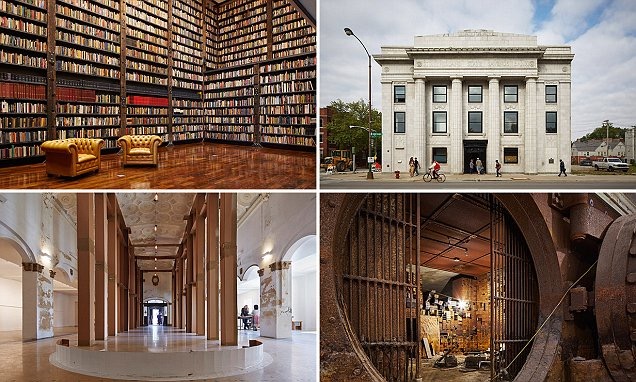
Stony Island Arts Bank
Photo: Steve Hall. © Hedrich Blessing. Courtesy of Rebuild Foundation
Dorchester Projects is not merely an art project; it is a form of socially engaged art that aims to breathe new life into a community through the power of culture. His work often responds to the disinvestment in African American urban communities while using archived objects imbued with histories to provoke conversations about memory, identity, and social justice. By recycling and reimagining existing buildings and materials, Gates preserves the memory of place, creates new opportunities for local residents, and draws attention to the potential of forgotten urban spaces. The project became a model for how artists can play an active role in urban development and social change, combining aesthetic vision with practical actions for the benefit of the community.
In its early years, Dorchester Projects quickly attracted the attention of art critics and cultural circles. The project was seen as an innovative example of socially engaged art that transcends traditional gallery spaces and directly addresses the problems of the urban environment and the community. Publications in significant art magazines and online platforms began to reflect the transformation of Chicago’s South Side brought about by Gates. Although he may not have received prestigious awards specifically for Dorchester Projects in the beginning, the very fact of its existence and impact began to bring him recognition in a broader context, paving the way for his future global influence. Gates' involvement with the "Arts and Public Life" initiative at the University of Chicago also played an important role in the development of his work and in expanding the reach of Dorchester Projects. This platform supports artists and cultural organizations working in Chicago’s South Side and provides resources and opportunities for collaboration, further establishing Gates as a key figure in socially engaged art.
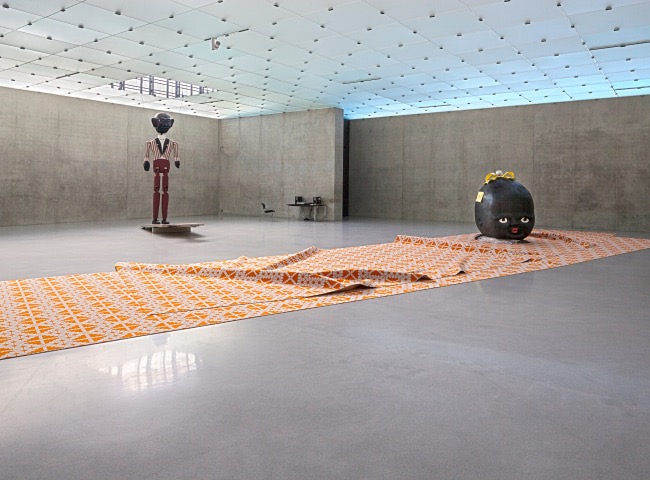
Installation view, Theaster Gates:
Black Archive, KUB Kunsthaus Bregenz, Austria, April 23-June 26, 2016
Artwork © Theaster Gates. Photo: Markus Tretter © Kunsthaus Bregenz
Dorchester Projects is both a continuation of Gates’ early interests in materials and transformation (through ceramics and urban planning) and lays the groundwork for his later work, which would garner global acclaim. It demonstrates his ability to blend artistic innovation with social engagement, turning neglected spaces into dynamic centers of creativity and memory. This first part of our exploration outlines the fundamental elements that shape Gates' unique approach and paves the way for understanding the further development of his oeuvre and his growing global influence, which will be the subject of the second part of this article.
